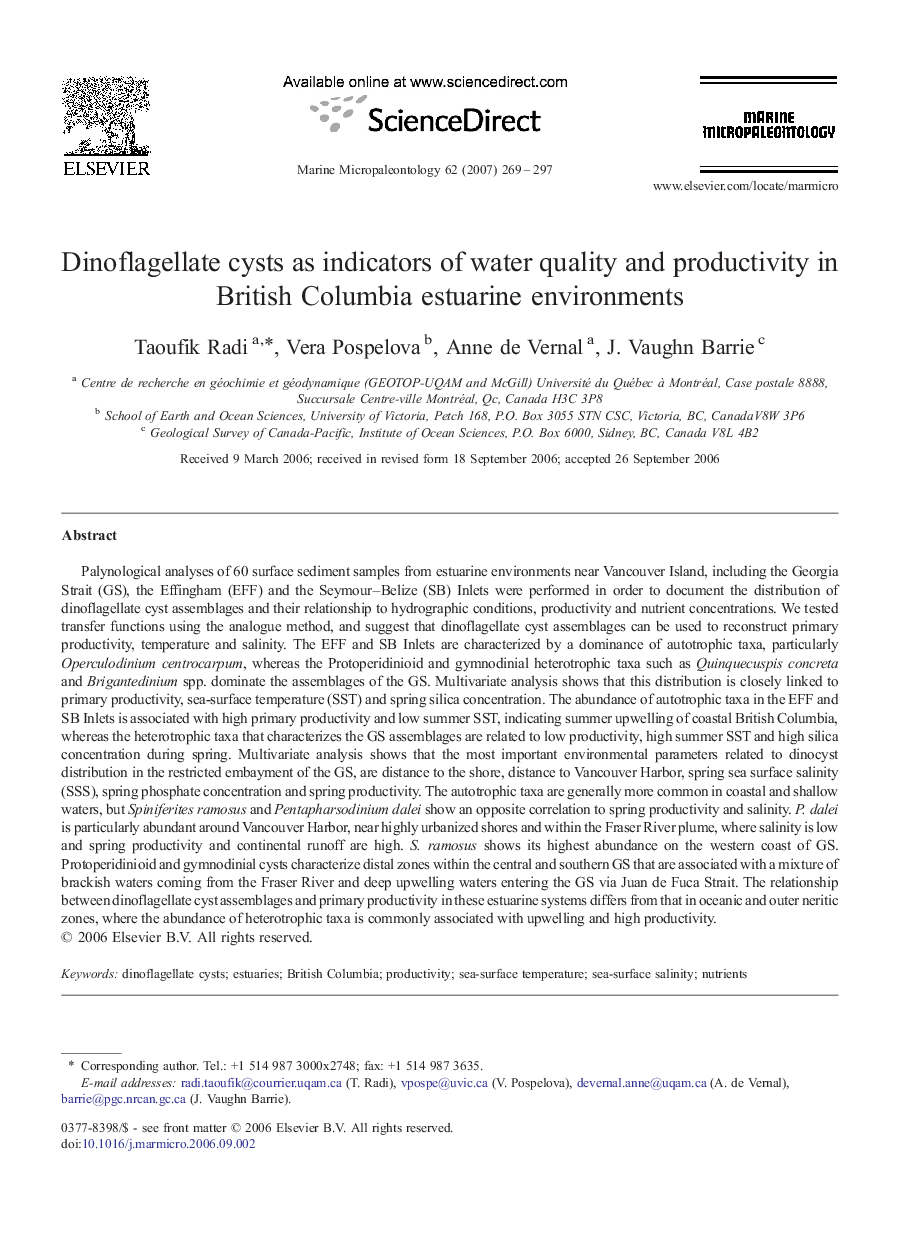| Article ID | Journal | Published Year | Pages | File Type |
|---|---|---|---|---|
| 4749463 | Marine Micropaleontology | 2007 | 29 Pages |
Palynological analyses of 60 surface sediment samples from estuarine environments near Vancouver Island, including the Georgia Strait (GS), the Effingham (EFF) and the Seymour–Belize (SB) Inlets were performed in order to document the distribution of dinoflagellate cyst assemblages and their relationship to hydrographic conditions, productivity and nutrient concentrations. We tested transfer functions using the analogue method, and suggest that dinoflagellate cyst assemblages can be used to reconstruct primary productivity, temperature and salinity. The EFF and SB Inlets are characterized by a dominance of autotrophic taxa, particularly Operculodinium centrocarpum, whereas the Protoperidinioid and gymnodinial heterotrophic taxa such as Quinquecuspis concreta and Brigantedinium spp. dominate the assemblages of the GS. Multivariate analysis shows that this distribution is closely linked to primary productivity, sea-surface temperature (SST) and spring silica concentration. The abundance of autotrophic taxa in the EFF and SB Inlets is associated with high primary productivity and low summer SST, indicating summer upwelling of coastal British Columbia, whereas the heterotrophic taxa that characterizes the GS assemblages are related to low productivity, high summer SST and high silica concentration during spring. Multivariate analysis shows that the most important environmental parameters related to dinocyst distribution in the restricted embayment of the GS, are distance to the shore, distance to Vancouver Harbor, spring sea surface salinity (SSS), spring phosphate concentration and spring productivity. The autotrophic taxa are generally more common in coastal and shallow waters, but Spiniferites ramosus and Pentapharsodinium dalei show an opposite correlation to spring productivity and salinity. P. dalei is particularly abundant around Vancouver Harbor, near highly urbanized shores and within the Fraser River plume, where salinity is low and spring productivity and continental runoff are high. S. ramosus shows its highest abundance on the western coast of GS. Protoperidinioid and gymnodinial cysts characterize distal zones within the central and southern GS that are associated with a mixture of brackish waters coming from the Fraser River and deep upwelling waters entering the GS via Juan de Fuca Strait. The relationship between dinoflagellate cyst assemblages and primary productivity in these estuarine systems differs from that in oceanic and outer neritic zones, where the abundance of heterotrophic taxa is commonly associated with upwelling and high productivity.
